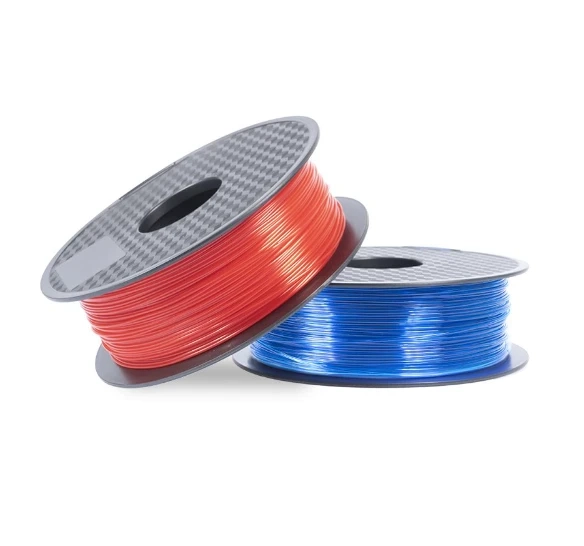When it comes to finding the best PETG filament for your 3d printer, then you have to make your way to the Snapmaker website.
What is a PETG filament? This is a rigid material that offers great impact and high heat resistance, while still maintaining a level of flexibility. This makes it more convenient than PLA if you are creating mechanical components or outdoor applications. In addition, a PETG filament is easy to work with, and it prints more easily than most high-strength filaments. Since it is less prone to warping and clogging, this means it can deliver well-adhered prints. In addition to that, the models also come out with a glossy surface finish.
While abs tend to be more durable than PETG, it has the downside of producing odor during the printing process. On the other hand, the best PETG filament is odorless and is 100% fully recyclable. This makes it a better option compared to ABS.
The spool is available as a spool of 1 kg, with a measurement of 315 meters. In terms of dimensional accuracy, this filament PETG has a high reading of 1.75 mm in diameter. The recommended printing temperature is 190°c- 210°c. The spool is available in four colors only, black, white, red, and blue.
Another important factor that makes the best PETG filament is compatibility and applicability. This filament is used in 3d printing, and it is compatible with most 3d printers. They include the Snapmaker Artisan, Snapmaker 2.0, and Snapmaker J1. The filament can also be used in a wide range of applications.
Compared to most filaments, PETG has less nozzle clogging and low warping ability, making it one of the easiest to work and print with. It extrudes well with little residue. In addition, the filament offers high rigidity and flexibility too. Filament PETG is highly resistant to chemicals including a wide range of detergents and chemicals. If you are transitioning from using PLA to PETG, you’ll find that it cracks more easily. Unlike PLA, PETG will suffer if you cool it too fast. Your print layers might start to crack or separate.
Another reason why PETG is preferred by most people is longevity. Material created using PLA filament tends to deform and get ruined if put into the dishwasher. On the other hand, stuff made with PETG can be easily cleaned and reused without ruining them. This makes PETG the best choice for home-based applications and projects. However, please be advised that PETG filament is not considered food safe.
If you want to get the most out of your PETG filament, then you must store it correctly. If you are unsure how always check the support tab on the Snapmaker website. Like PLA, filament PETG absorbs the moisture in the air, making it damp. This in turn might cause the filament to ruin your projects or clock the nozzle. An exposed filament must be used within a month.
If printing intervals are too long, store your filament in a vacuumed sealed bag with a desiccant. Ensure you label the bag with the day the spool was unwrapped. This increases the durability of the spool to up to 24 months. Store the filament at temperatures ranging from 25c, and a relative humidity of 40%. Also, avoid direct exposure to sunlight. Humidity and temperature are the most important factors when it comes to storing and preserving the integrity of your filament PETG. You can find the storage instructions on the filament's package, so don't throw them out!
To prevent this much hassle, it is advisable to only buy as much PETG as you need. If any is left over, try and use it within the month it starts to be exposed to the atmosphere.


